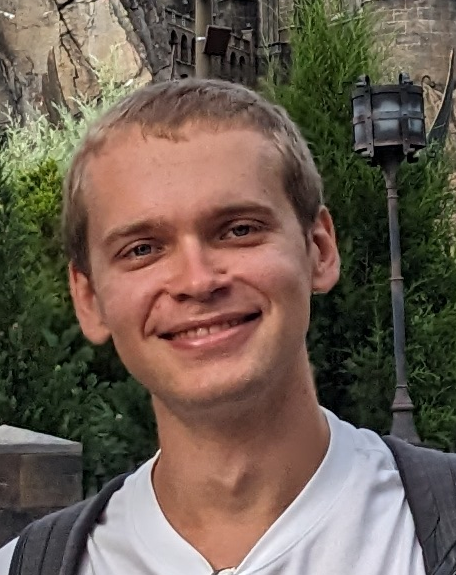Yury Polyachenko

Department: Chemistry
Faculty Adviser: William Jacobs
Year of Study: G3
Undergraduate School: MIPT (Moscow)
Undergraduate Major: Applied math and physics
Personal Bio
I started doing research in high school. I wrote a stellar dynamics program to simulate a galaxy and studied the formation of spiral structures in galaxies.
In my undergrad (at MIPT, Moscow) I worked in the lab "Computational Methods in condensed matter physics". My first project was about a specific correlator that allowed finding transition temperatures using relatively small simulation boxes (meaning fewer computational resources). The work was published in a Q1 journal "J. of Molecular Liquids".
The second project was to verify a certain molecular-dynamical model of crystalline lysozyme protein by comparing the computed and experimentally measured stress modulus of the system. Crystalline phase is required for the X-ray protein structural studies, yet there is a lack of accurate forcefields describing crystalline protein behavior.
My master's project was done in EPFL (Switzerland). I was simulating translocations of proteins through the Aerolysin nanopore. Nanopore sequencing is a relatively new field that has been developed in Oxford, U Illinois, EPFL, and many other places.
Besides research (which I genuinely enjoy) I am into outdoor activities. I like hiking, swimming, climbing, and sometimes running. I am also interested in psychology, sociology, and philosophy. I think people are not less interesting than molecules to study.
Fun Fact
I really liked my winter trip to Baikal - the deepest lake in the world.
Research Pitch
I am now studying a branch of theoretical chemistry about phase transitions. Specifically, we are using stat-mech to computatally study phase separation in complex mixtures. Such mixtures occur e.g. in living cells. Thus understanding mixture behavior can allow us to better understand and predict drug effects and other treatments.
Another project is a collaboration with bio-engineers in which we study the early stages of DNA transcription. It was shown a few years ago that protein condensates are essential for inter-nuclear processes in living cells. I am simulating how transcription factor condensates form on DNA to facilitate transcription. We found a regime when transcriptional condensates are perfectly targeted to transcription regions, which is exactly what a cell wants. So, this may elucidate the molecular mechanisms of DNA transcription initiation.
A serious issue with the computational study of phase separation is the time necessary for the transition to occur, which makes a brute-force simulation too expensive to conduct. Therefore, methods to speed up phase transition simulations were developed. The key idea of the method we are utilizing right now is to "remember" intermediate transition states of the system under study in order to trace the transition step-by-step instead of waiting for the transition to occur in a single jump.
Upcoming Programs That I Am Attending:
Plans for Summer 2025
Interested in participating in Summer 2025 ReMatch+ program.

